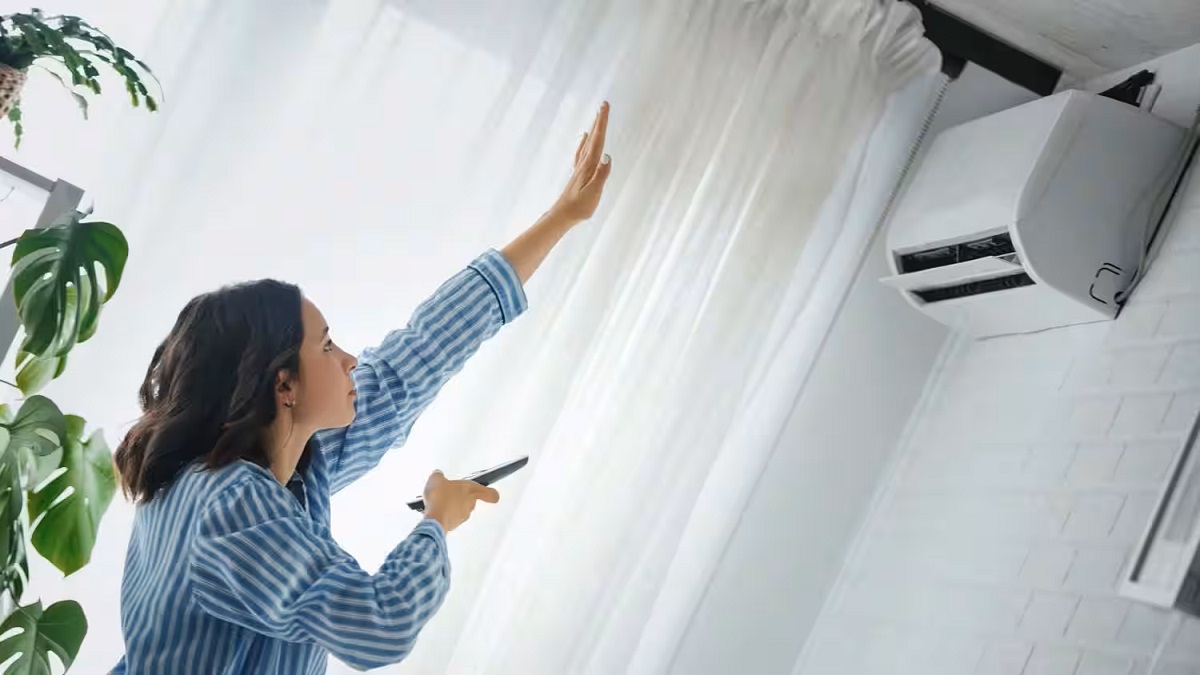

Articles
How Long Does It Take For AC To Cool House
Modified: November 1, 2024
Find out how long it takes for your AC to cool your house with our informative articles. Achieve optimal comfort and efficiency.
(Many of the links in this article redirect to a specific reviewed product. Your purchase of these products through affiliate links helps to generate commission for Storables.com, at no extra cost. Learn more)
Introduction
When the scorching heat of summer arrives, there’s nothing more comforting than walking into a cool and refreshing home. Air conditioning systems have become a staple in households, providing relief from the sweltering temperatures outside. However, have you ever wondered how long it takes for your AC to cool your house?
There isn’t a straightforward answer to this question, as the time it takes for an AC unit to cool a house can vary based on several factors. Understanding these factors can help you optimize the cooling process and make your home a comfortable oasis from the summer heat.
In this article, we will explore the factors affecting the cooling time of an air conditioning unit and discover ways to make the cooling process more efficient. So, grab a chilled drink, sit back, and let’s dive in.
Key Takeaways:
- Factors such as house size, insulation, AC unit placement, airflow, and thermostat settings all impact cooling time. Optimizing these factors can enhance AC efficiency and create a comfortable living environment while minimizing energy consumption.
- Implementing additional cooling methods, such as shade, ventilation, fans, and evaporative cooling, alongside your AC system can improve overall comfort and reduce energy usage. Upgrading to an energy-efficient AC unit with proper sizing is also crucial for optimal cooling efficiency.
Read more: How Long Does AC Recharge Take
Factors Affecting Cooling Time
Several factors come into play when determining how long it takes for your AC unit to cool your house. Let’s take a closer look at each of these factors:
1. Size of the House
The size of your house plays a significant role in how long it takes for your AC unit to cool it down. A larger house requires more time and energy to cool compared to a smaller space. This is because the AC unit needs to circulate air and remove heat from a larger area. So, if you have a spacious home, be prepared for a slightly longer cooling time.
2. Insulation
The level of insulation in your home affects the efficiency of your AC unit. Well-insulated homes can retain cool air for longer, allowing the AC unit to work more efficiently. On the other hand, poor insulation leads to air leakage and heat infiltration, making the AC unit work harder and take longer to cool the house. Proper insulation, such as sealing air leaks and adding insulation in the attic and walls, can help reduce cooling time.
3. Placement of the AC Unit
The placement of your AC unit also impacts cooling time. If the unit is installed in direct sunlight or exposed to heat sources like appliances or electronics, it will have to work harder to cool the air. Placing the AC unit in a shaded area or utilizing shading devices can help improve its efficiency and reduce cooling time.
Read more: How Long Does It Take To Declutter A House
4. Airflow
Airflow plays a vital role in the cooling process. If there are obstacles blocking the vents or the air filters are clogged, the airflow will be restricted, resulting in longer cooling times. It is essential to regularly clean or replace the air filters and ensure vents are clear of any obstructions to promote optimal airflow.
5. Thermostat Settings
The thermostat settings directly impact the cooling time. If you set the thermostat temperature too low, the AC unit will have to work harder and longer to reach that desired temperature. It is recommended to set the thermostat at a comfortable temperature that is energy-efficient. Additionally, utilizing programmable thermostats can help regulate temperature based on different times of the day, optimizing the cooling process.
6. Efficiency of the AC Unit
The efficiency of your AC unit affects cooling time. If your unit is old and outdated, it may not cool your house as quickly as a newer, more energy-efficient model. Investing in a high-efficiency AC unit can significantly reduce cooling time and energy consumption.
By considering these factors and implementing strategies to optimize them, you can reduce the cooling time of your AC unit, making your home a cool and refreshing sanctuary even on the hottest of days. Now that we understand the factors affecting cooling time let’s explore some cooling methods that can further enhance efficiency.
Size of the House
The size of your house is a key factor in determining how long it takes for your AC unit to cool it down. The larger the square footage of your home, the more time and energy it will take for the AC unit to cool the entire space.
Air conditioning units are designed to cool a specific amount of air per hour, typically measured in British Thermal Units (BTUs). The BTU rating of an AC unit indicates its cooling capacity. When choosing an AC unit, it’s important to consider the square footage of your home to ensure that the cooling capacity is sufficient to adequately cool the space.
In general, a rule of thumb is that it requires 20 BTUs per square foot of living space to properly cool a home. So, for example, if you have a 1,000 square foot home, you would need an AC unit with a cooling capacity of 20,000 BTUs.
However, it’s essential to note that this is a rough estimate, and other factors such as climate, insulation, and the number of windows in your home can affect the cooling requirements. Consulting with a professional HVAC technician can help determine the appropriate cooling capacity for your specific home.
When it comes to cooling larger homes, the challenge lies in distributing cool air evenly throughout the entire space. The AC unit needs to overcome the resistance caused by the larger area, longer ductwork, and more rooms. This means that the AC unit may need to run for a more extended period to achieve the desired temperature in every corner of the house.
Additionally, homes with multiple stories can further complicate the cooling process. Heat naturally rises, which means that the upper floors of a multi-story home tend to be warmer than the lower floors. To ensure proper cooling, it may be necessary to have separate AC units or zone the cooling system to focus more cooling power on the upper levels.
While larger homes may require more time and energy to cool, there are steps you can take to optimize the cooling process. Ensuring proper insulation, sealing air leaks, and using ceiling fans to promote air circulation can all help improve the efficiency of your AC unit and reduce cooling time.
By understanding the impact that the size of your home has on cooling time, you can make informed decisions when selecting an AC unit and take necessary measures to enhance the cooling process. Remember, a properly sized and well-maintained AC unit can efficiently cool even the largest of homes, creating a comfortable environment for you and your family.
Read more: How Long Does It Take To Install AC Unit
Insulation
Insulation plays a crucial role in the efficiency and effectiveness of your home’s cooling system. Proper insulation helps to minimize the transfer of heat between the interior and exterior of your home, resulting in shorter cooling times and reduced energy consumption. On the other hand, inadequate insulation can lead to heat infiltration and increased cooling demands.
A well-insulated home retains cool air for longer periods, allowing your AC unit to work more efficiently. Here are a few key areas where insulation is essential:
1. Walls and Attics
Insulating exterior walls and the attic is crucial in preventing heat from entering your home. Adding insulation to these areas helps to create a barrier that slows down the transfer of heat. It reduces the amount of hot air that enters the living areas of your home, allowing your AC unit to cool the space more effectively.
2. Doors and Windows
Doors and windows are common areas for heat to infiltrate. It’s important to ensure that they are properly sealed to prevent air leakage. Installing weatherstripping around doors and windows can help create a tight seal, reducing the amount of hot air that enters your home and improving the efficiency of your cooling system.
3. Ductwork
The ductwork of your HVAC system needs to be properly insulated as well. Uninsulated or poorly insulated ducts can result in cooled air losing its temperature as it travels through the ducts, decreasing the effectiveness of your cooling system. Insulating the ductwork helps to maintain the temperature of the cooled air, ensuring that it reaches the desired living spaces efficiently.
Read more: How Long Does It Take To Brick A House
4. Floor Insulation
For homes with raised foundations or crawl spaces, insulating the floor can make a significant difference in the cooling process. Insulating the floor helps to minimize heat transfer from the hot ground beneath your home, allowing your AC unit to cool the space more efficiently.
If you’re unsure about the insulation levels in your home, it’s advisable to consult with an insulation professional or an HVAC technician. They can assess your home’s insulation needs and recommend the appropriate types and levels of insulation for optimal cooling efficiency.
By improving your home’s insulation, you not only enhance the effectiveness of your cooling system but also reduce energy consumption and utility bills. Proper insulation ensures that cool air stays in and hot air stays out, creating a comfortable and energy-efficient living environment.
Placement of the AC Unit
The placement of your air conditioning (AC) unit can have a significant impact on its cooling efficiency and the time it takes to cool your home. Proper placement helps to maximize airflow, reduce heat infiltration, and ensure optimal performance. Here are some key considerations for placing your AC unit:
1. Shaded Area
One of the most important factors to consider when placing your AC unit is to position it in a shaded area. Direct sunlight can heat up the unit and interfere with its cooling capabilities. Placing the AC unit in a shaded spot, such as under a tree or on the north side of your house, can help prevent the unit from being exposed to excessive heat and improve its cooling efficiency.
2. Adequate Clearance
Proper clearance around the AC unit is essential for airflow and efficient operation. Make sure to leave enough space around the unit for air to freely circulate. Check the manufacturer’s guidelines for minimum clearance requirements, but in general, maintaining at least two feet of clearance on all sides is recommended. This allows for adequate airflow and helps prevent any obstructions that could hinder the unit’s cooling performance.
3. Heat Sources
Avoid placing the AC unit near heat-emitting sources such as appliances, electronics, or direct venting systems. These heat sources can interfere with the cooling process and make it more challenging for the AC unit to achieve the desired temperature. Keep the unit away from sources of heat to allow it to operate efficiently without unnecessary obstacles.
4. Proper Ventilation
Ensure that the outdoor unit of your AC system has proper ventilation. This allows the hot air generated during the cooling process to dissipate effectively. Avoid placing any barriers or obstructions near the unit that could inhibit the flow of air. Good ventilation helps the AC unit work optimally and maintain consistent cooling performance.
5. Noise Considerations
While not directly related to cooling efficiency, it’s worth considering the noise produced by the AC unit. If the unit is positioned near bedrooms, outdoor living spaces, or areas where a quiet environment is desired, this can be a critical factor. Some AC units offer quieter operation modes or noise-reduction features, which can be beneficial for those seeking a more peaceful living environment.
By carefully considering the placement of your AC unit, you can enhance its cooling efficiency, reduce energy consumption, and improve the overall comfort of your home. If you’re unsure about the best placement for your unit, consult with an HVAC professional who can assess your specific situation and provide guidance for optimal positioning.
Airflow
Airflow is a critical factor when it comes to the cooling efficiency of your air conditioning (AC) system. Proper airflow helps to distribute cool air throughout your home effectively and allows the AC unit to operate efficiently. Here are some key aspects of airflow to consider:
1. Clear Vents and Registers
Ensuring that vents and registers are clean and free from obstructions is essential for optimal airflow. Over time, dust, debris, or furniture placement can block the vents, obstructing the flow of air. Regularly inspect and clean the vents and registers to allow the cool air to circulate freely and reach all areas of your home.
2. Clean and Replace Air Filters
The air filters in your AC system help to trap dust, allergens, and debris from entering the system. Over time, these filters can become clogged, restricting airflow and reducing the cooling efficiency of the unit. Regularly clean or replace the air filters according to the manufacturer’s recommendations to maintain proper airflow and optimize cooling performance.
3. Keep Obstacles Away from Vents
Furniture, curtains, or any other objects placed in front of vents can obstruct airflow. Make sure to arrange your furniture in a way that allows for unobstructed airflow from the vents. If possible, avoid placing large objects directly in front of the vents to ensure the cool air can flow freely into the room.
4. Balance Airflow
In some cases, you may notice uneven cooling in different parts of your home. This can be a result of unbalanced airflow. Adjusting the dampers in your ductwork or using registers with adjustable louvers can help redirect airflow to balance the cooling throughout your home. Consult with an HVAC professional if you notice significant airflow imbalances that affect the comfort of your space.
Read more: How Long Does Plumbing Take
5. Consider Ceiling Fans
Ceiling fans can complement your AC system by promoting better airflow in your home. The gentle breeze created by ceiling fans helps to circulate the cool air from the AC unit, making it feel more comfortable. Running ceiling fans in conjunction with your AC system can improve the overall efficiency and cooling effect, allowing you to set your thermostat at a slightly higher temperature without sacrificing comfort.
By paying attention to airflow and implementing these measures, you can maximize the efficiency of your AC unit and improve the cooling performance of your home. Remember, proper airflow ensures that the cool air is distributed evenly, creating a comfortable and refreshing environment.
Thermostat Settings
The settings on your thermostat play a crucial role in the efficiency and effectiveness of your air conditioning (AC) system. Proper thermostat settings can help you achieve the desired temperature while optimizing energy usage and reducing cooling time. Here are some key considerations for setting your thermostat:
1. Temperature Setting
The temperature setting on your thermostat determines the cooling level of your AC system. It’s essential to find a balance between comfort and energy efficiency. Setting the thermostat too low will cause your AC unit to work harder and longer, increasing energy consumption. On the other hand, setting it too high may result in discomfort. The ideal temperature setting is typically around 78°F (25.5°C).
2. Programmable Thermostats
Consider upgrading to a programmable thermostat if you don’t already have one. Programmable thermostats allow you to set temperature schedules based on different times of the day and week. For example, you can set the thermostat to automatically adjust to a higher temperature during the hours when no one is home or during the night when you’re sleeping. This helps to optimize energy usage and reduce cooling time while ensuring you still have a comfortable environment when needed.
Read more: How Long Does An AC Compressor Last
3. Thermostat Placement
The placement of your thermostat can impact its accuracy and efficiency. It’s essential to place the thermostat away from heat sources, direct sunlight, drafts, and areas with poor airflow. These factors can interfere with the thermostat’s ability to accurately detect the true temperature in the space, leading to improper cooling settings. Ideally, the thermostat should be installed on an interior wall, away from any external influences.
4. Utilize Fan Mode
Most thermostats have a fan mode option, which allows you to control the fan independently of the cooling system. Using the fan mode can help improve air circulation and distribute the cool air more effectively throughout your home. In situations where the weather is mild, or you’re simply looking to circulate air without active cooling, using the fan mode can provide the desired airflow and comfort without using excessive energy.
5. Smart Thermostats
If you’re looking to take thermostat settings to the next level, consider investing in a smart thermostat. Smart thermostats offer advanced features such as learning capabilities, remote control through smartphone apps, and integration with home automation systems. These thermostats can learn your preferences, automatically adjust settings based on your behavior, and provide energy usage reports to help you optimize cooling efficiency.
By paying attention to your thermostat settings, you can optimize the performance of your AC system, reduce energy consumption, and effectively cool your home. Experiment with different settings and consider upgrading to programmable or smart thermostats to make the most out of your cooling system and create a comfortable and energy-efficient living environment.
Efficiency of the AC Unit
The efficiency of your air conditioning (AC) unit has a significant impact on cooling time and energy consumption. An efficient AC unit can cool your home more quickly and effectively, providing you with optimal comfort while minimizing energy waste. Here are some key factors that affect the efficiency of your AC unit:
Read more: How Long Does AC Unit Last
1. SEER Rating
The Seasonal Energy Efficiency Ratio (SEER) rating is a measure of the cooling output of an AC unit relative to the energy it consumes. A higher SEER rating indicates a more energy-efficient unit. When choosing a new AC unit or evaluating the efficiency of your existing one, consider units with higher SEER ratings for enhanced cooling efficiency and reduced energy consumption.
2. Proper Sizing
Proper sizing of your AC unit is crucial for optimal efficiency. An undersized unit will struggle to cool your home adequately, leading to longer cooling times. Conversely, an oversized unit may cool your home quickly, but it will cycle on and off frequently, resulting in inefficiency and potential comfort issues. It’s essential to consult with an HVAC professional to determine the appropriate size of the AC unit for your specific home’s cooling needs.
3. Regular Maintenance
Maintaining your AC unit is essential for its efficiency and longevity. Regular maintenance, such as cleaning or replacing air filters, checking and cleaning coils, and lubricating moving parts, helps to optimize the performance of the unit. A well-maintained AC unit operates more efficiently, cools your home more effectively, and consumes less energy.
4. Ductwork Efficiency
The efficiency of your AC unit is also influenced by the condition of your ductwork. Leaky or poorly insulated ductwork can result in air loss, reducing cooling efficiency and increasing energy consumption. Inspecting and sealing any leaks in the ductwork and ensuring proper insulation can help improve the overall efficiency of the AC unit and the cooling process.
Read more: How Long Does An AC Unit Last In Florida
5. Energy-saving Features
Newer AC units often come equipped with energy-saving features designed to enhance efficiency. These features may include variable-speed motors, two-stage compressors, and smart controls that optimize energy usage based on the needs of your home. Investing in an AC unit with these features can significantly improve cooling efficiency and reduce your energy bills.
By considering the efficiency of your AC unit and taking necessary measures to enhance it, you can reduce cooling time, lower energy consumption, and create a comfortable living environment. Regular maintenance, careful sizing, and choosing an AC unit with a high SEER rating are all steps in the right direction to achieve an efficient cooling system.
Cooling Methods
When it comes to keeping your home cool, there are various methods beyond relying solely on your air conditioning (AC) unit. These additional cooling methods can supplement your AC system and help improve comfort while also reducing energy consumption. Here are some effective cooling methods:
1. Shade and Ventilation
Strategic use of shade and natural ventilation can significantly reduce the need for excessive cooling. Utilize curtains, blinds, or window films to block out sunlight and reduce heat gain. Additionally, create cross-ventilation by opening windows on opposite sides of your home to promote cooler air circulation.
2. Ceiling Fans and Portable Fans
Ceiling fans and portable fans are excellent tools for increasing comfort and reducing reliance on the AC unit. Fans create a wind-chill effect, helping you feel cooler without lowering the actual temperature of the room. By using fans in conjunction with your AC system, you can set your thermostat at a slightly higher temperature without sacrificing comfort.
3. Zone Cooling
If your home has multiple levels or rooms with different cooling needs, consider implementing a zoning system. Zoning allows you to control the temperature in specific areas or zones of your home independently. By cooling only the areas that are occupied or require more cooling, you can reduce energy waste and optimize comfort.
4. Evaporative Cooling
Evaporative cooling, also known as swamp cooling, is a method that utilizes the evaporation of water to cool the air. This method is particularly effective in dry climates. Evaporative coolers, also called swamp coolers, draw in warm outside air, pass it through moist pads, and release cooled air into your home. These systems are energy-efficient and can provide a refreshing and cost-effective alternative to traditional AC units.
5. Insulated Window Coverings
Insulated window coverings, such as thermal curtains or blinds, can help reduce heat transfer through windows. These coverings provide an extra layer of insulation and help block out the heat from the sun, keeping your home cooler. They can be particularly effective during the hottest parts of the day when the sun is directly shining through the windows.
6. Heat-producing Appliance Management
Heat-generating appliances such as ovens, dryers, and dishwashers can significantly contribute to the heat load in your home. To minimize the impact of these appliances on the indoor temperature, try to use them during the cooler parts of the day or consider using them consecutively to reduce the time they are in use.
Implementing these cooling methods alongside your AC system can enhance your overall cooling efforts, improve comfort, and save energy in the process. It’s important to find the right combination of methods that work best for your home and climate, allowing you to create a cool and enjoyable living environment while being mindful of energy consumption.
Conclusion
Keeping your house cool during the hot summer months is essential for your comfort and well-being. Understanding the factors that affect the cooling time of your air conditioning (AC) unit can help you optimize its performance and create a comfortable living environment while minimizing energy consumption.
Factors such as the size of your house, insulation, placement of the AC unit, airflow, thermostat settings, and the efficiency of the AC unit itself all play a role in the cooling process. By considering these factors and implementing the appropriate measures, you can enhance the efficiency and effectiveness of your AC system.
Proper insulation and sealing air leaks minimize heat infiltration and improve cooling efficiency. Strategic placement of the AC unit in shaded areas and ensuring sufficient clearance for proper airflow are crucial for optimal performance. Regular maintenance, including cleaning or replacing air filters, and balancing airflow through ductwork, further enhance the efficiency of the unit.
Paying attention to thermostat settings, utilizing programmable thermostats, and taking advantage of energy-saving features can help you achieve the desired temperature while minimizing energy consumption. Additionally, exploring alternative cooling methods, such as utilizing shade, ventilation, ceiling fans, and evaporative cooling, can complement your AC system and reduce the reliance on it.
It is also worth mentioning that upgrading to an energy-efficient AC unit with a higher SEER rating can significantly improve cooling efficiency and reduce energy consumption. However, proper sizing of the AC unit is equally important to ensure optimal performance and prevent unnecessary energy waste.
By taking a holistic approach to cooling your home, considering various factors and implementing the right strategies, you can create a cool and comfortable living space while minimizing energy consumption and reducing cooling time. Remember, every small improvement counts, from maintaining proper insulation to using fans and implementing energy-saving features. Stay cool and enjoy the summer months with an efficiently cooled home.
Frequently Asked Questions about How Long Does It Take For AC To Cool House
Was this page helpful?
At Storables.com, we guarantee accurate and reliable information. Our content, validated by Expert Board Contributors, is crafted following stringent Editorial Policies. We're committed to providing you with well-researched, expert-backed insights for all your informational needs.
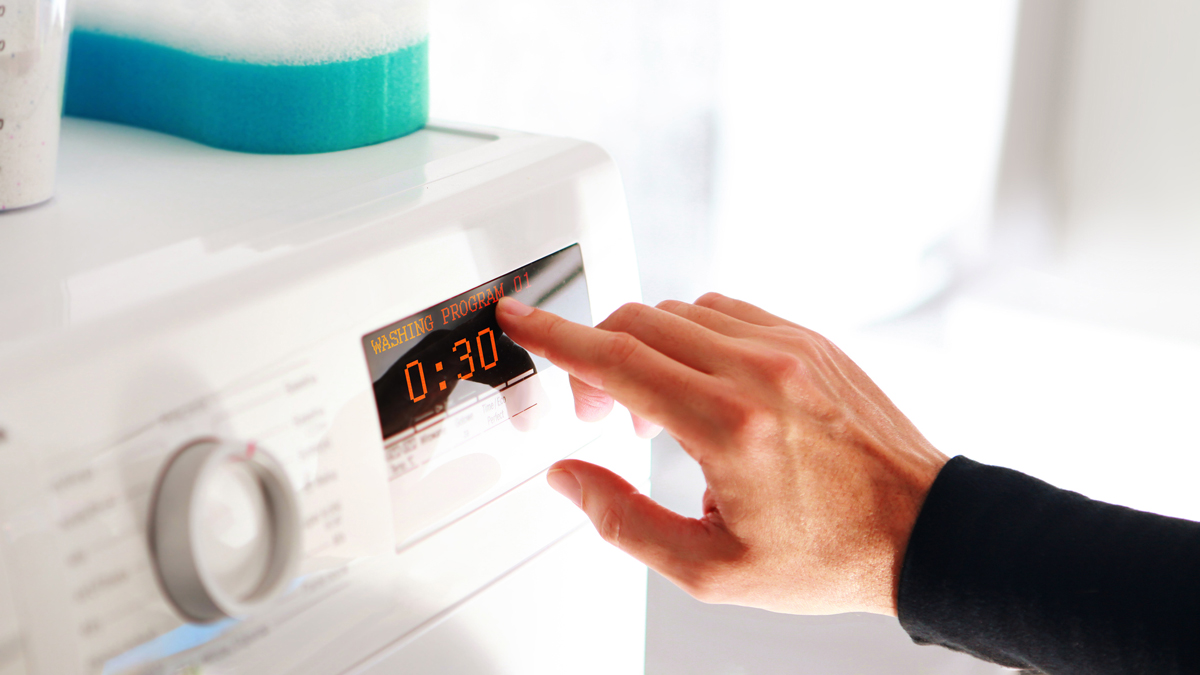
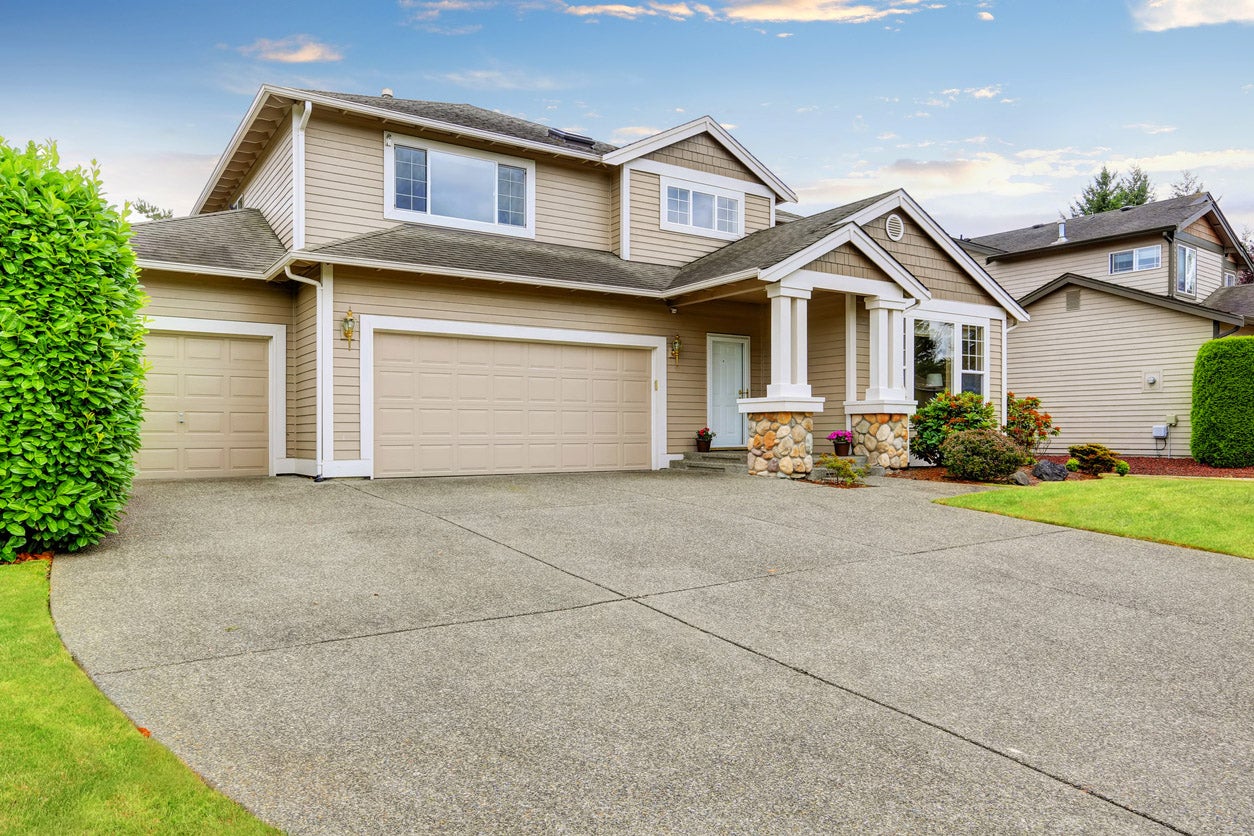
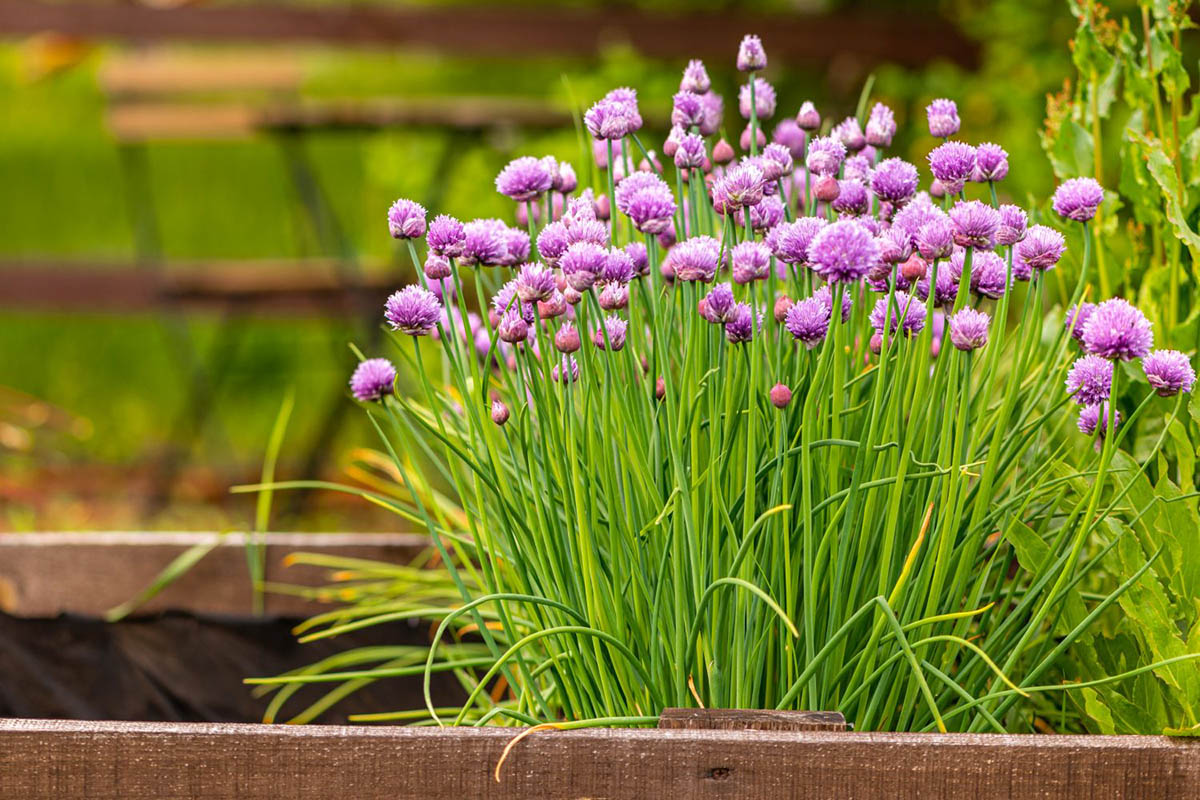
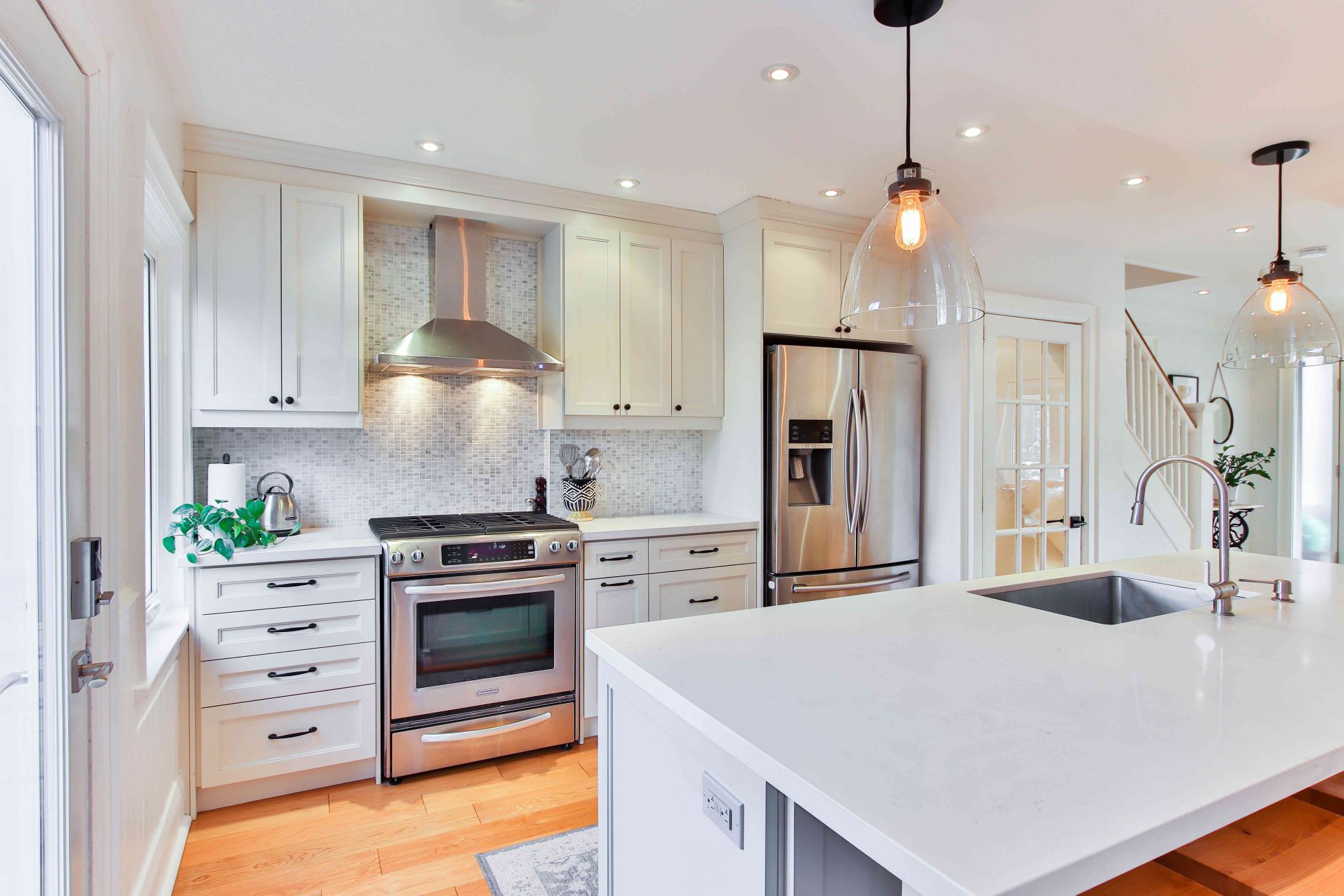

0 thoughts on “How Long Does It Take For AC To Cool House”